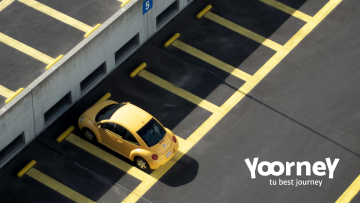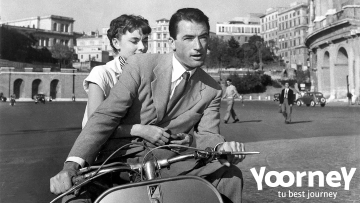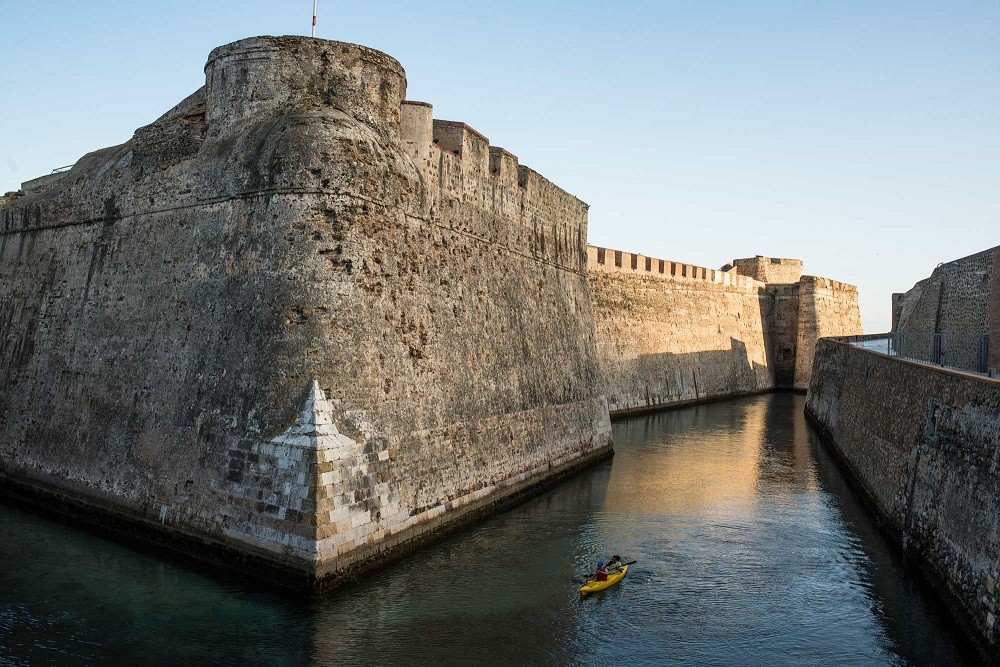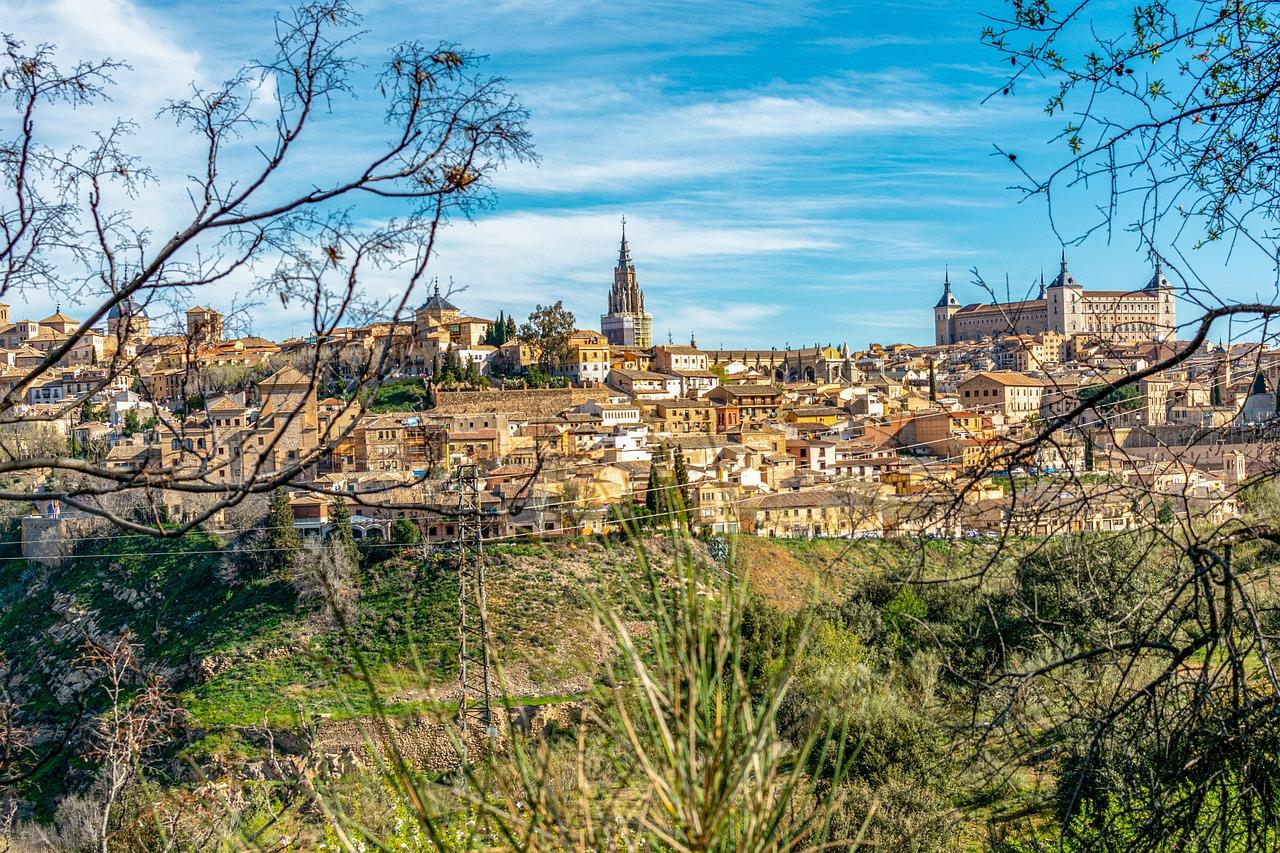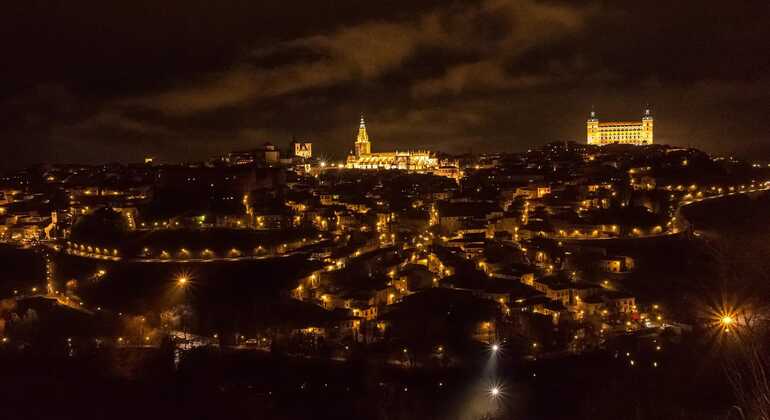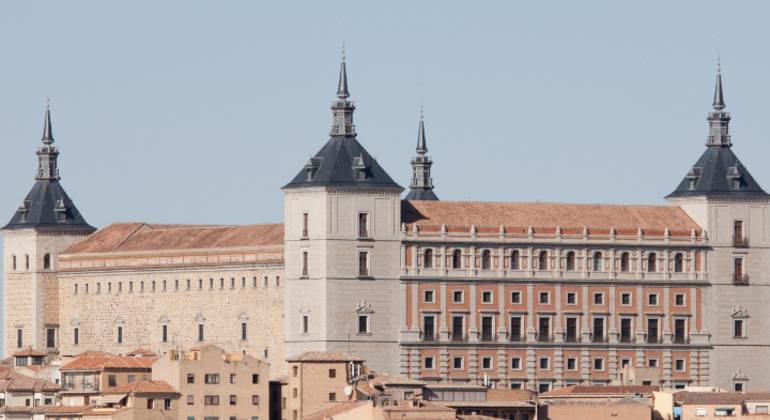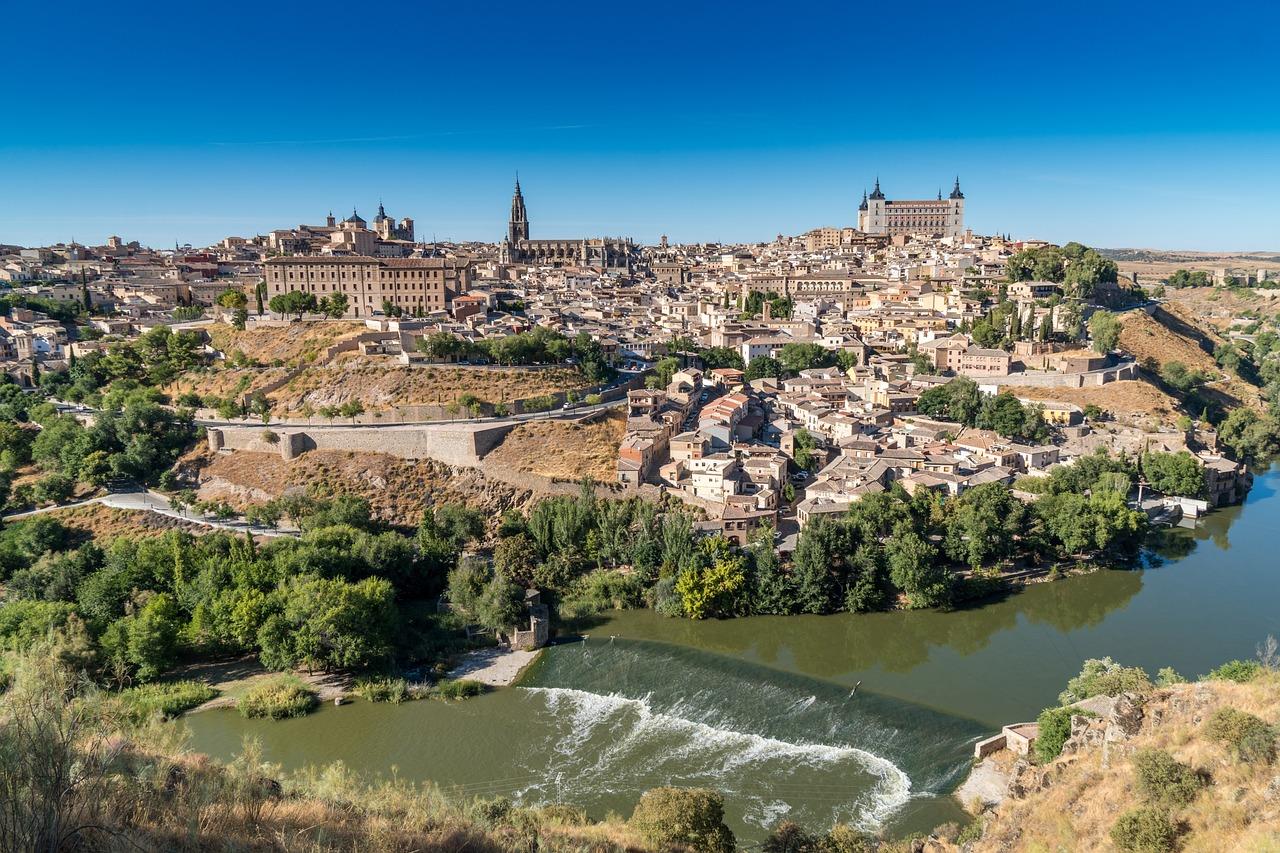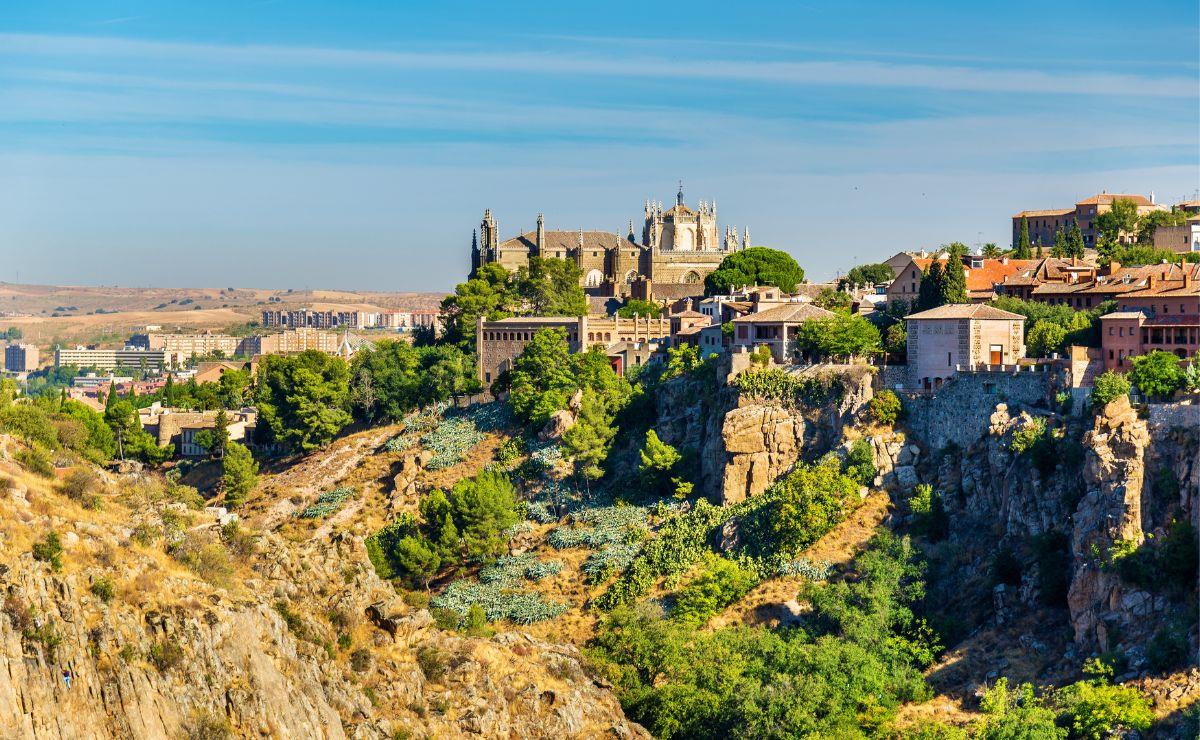Santa María La Blanca Synagogue
It was built in the 13th century as a place of worship for the Jewish community of Toledo. However, in the 15th century, after the expulsion of the Jews from Spain, the synagogue was transformed into a Christian church. During the following centuries, the building had various uses, such as a hospital, a barracks, a warehouse and even a stable. In the 19th century, the synagogue was restored and turned into a museum.
Santa María La Blanca Synagogue is one of the most prominent buildings in Toledo, Spain. Although today it is a museum, its history and architecture make it a must-see for tourists who want to learn about the cultural and religious richness of this city.
The Santa María La Blanca Synagogue has with impressive Mudejar-style architecture, combining Christian, Jewish and Islamic elements. Among the most outstanding elements of the synagogue are its wide central space, its horseshoe arches, its ceilings decorated with stucco and plasterwork, and its Jewish symbols such as the Star of David and the menorah.
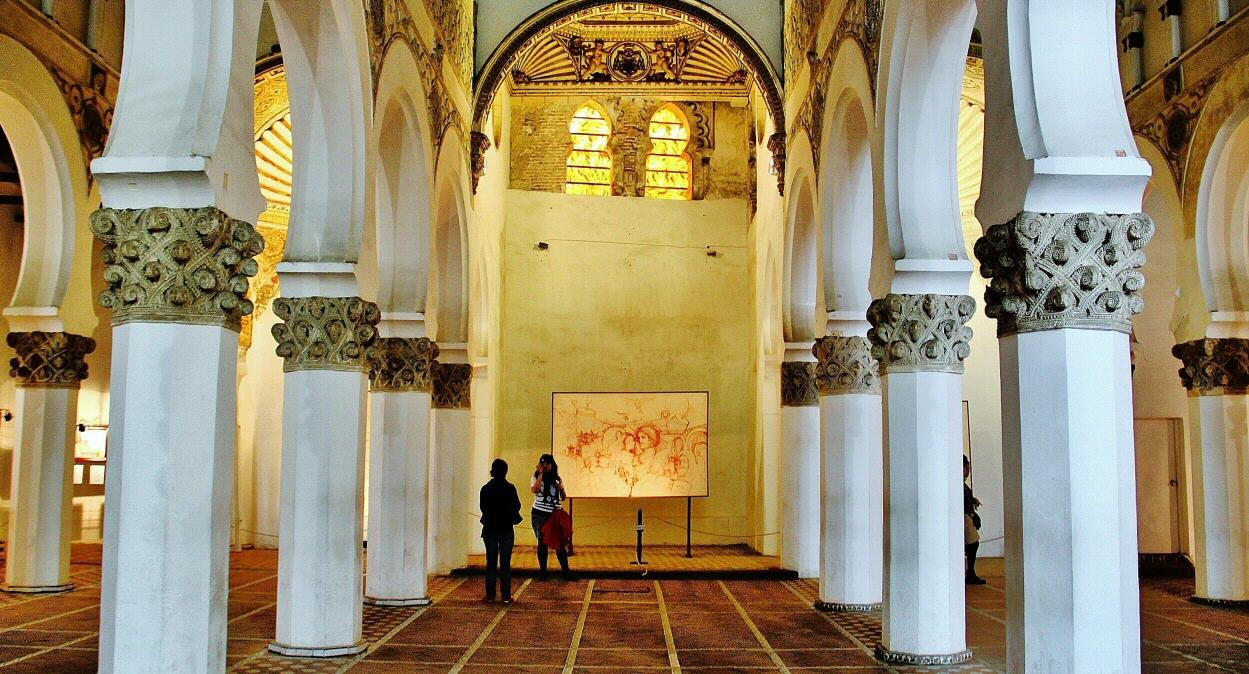
Points of interest Santa María La Blanca Synagogue
Here are some of the most outstanding elements that you can see in the Santa María La Blanca Synagogue:
Architecture:
The Holy Synagogue María La Blanca is an impressive example of Mudejar architecture, combining Christian, Jewish and Islamic elements. The building has a large central space, a series of horseshoe arches that divide the space, and a ceiling decorated with stucco and plasterwork. You will also find Jewish symbols such as the Star of David and the menorah, as well as Christian elements such as the image of the Virgin on one of the walls.
History:
The synagogue was built in the 12th century, at the height of coexistence between Jews, Christians and Islam in Toledo. For centuries, the building was used as a place of worship by the city's Jewish community, until it was converted into a church in the 15th century by order of the Catholic Monarchs.
Prayer Room:
The Prayer Room is the central space of the synagogue, and is impressive for its spaciousness and decoration. In the center of the room you will find a series of columns and horseshoe arches that divide the space, and on the walls you will find a series of niches that once housed sacred books.
Patio de los Naranjos :
The courtyard of the orange trees is a calm and cool space that is located in the center of the synagogue. In it you will find a fountain surrounded by orange trees, and you will be able to enjoy a moment of peace and tranquility in the middle of the visit.
Decorative elements:
During your visit the synagogue, pay attention to the decorative details of the building. You will find a great variety of ornamental elements, such as the stucco and plasterwork on the ceiling, the columns decorated with geometric motifs, and the tiles that decorate the walls.
Practical information on the Synagogue of Santa María La Blanca
It is located in the historic center of Toledo, near the Cathedral. It can be reached on foot, by public transport or by car. Opening and closing times vary depending on the time of year, but are usually from 10:00 a.m. to 6:00 p.m. The price of tickets is about €3, with discounts for students and seniors. In addition, you can rent audio guides or hire guided tours to learn more about the history and architecture of the synagogue. Accessibility for people with reduced mobility is limited.
Guided tours of the Santa María La Blanca Synagogue
There are several guided tours to get to know the Santa María La Blanca Synagogue and its surroundings. Some focus on the Jewish history of Toledo, while others combine a visit to the synagogue with that of other nearby monuments. The price of the guided tours varies according to their duration and their content, but they usually cost around €10-15 per person. Book the guided tour on our website.
Yorney tips
Santa María La Blanca Synagogue is an essential place for tourists visiting Toledo. Its history and its architecture make it a testimony of the coexistence between the Jewish, Christian and Islamic cultures that characterized this city for centuries. Its visit is recommended for all those who want to know the cultural and religious wealth of Spain.


